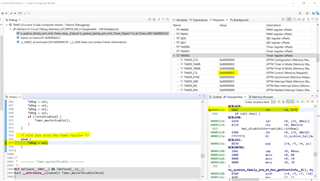Hello,
Im using a timer interrupt for a loop that checks for an event. When that event is detected id like to stop the timer.
when i call the Timer_stop() func it does indeed stop but there is a delay from the call to the actual stop ( i think) docsd on this are pretty cryptic.
Is there a way to check when the timer actually stops? I find it continues to recieve events after the stop call. If a delay is added it seems to work but i hate to just add
some random delay if there was a way to know when the timer stops.
Thanks


